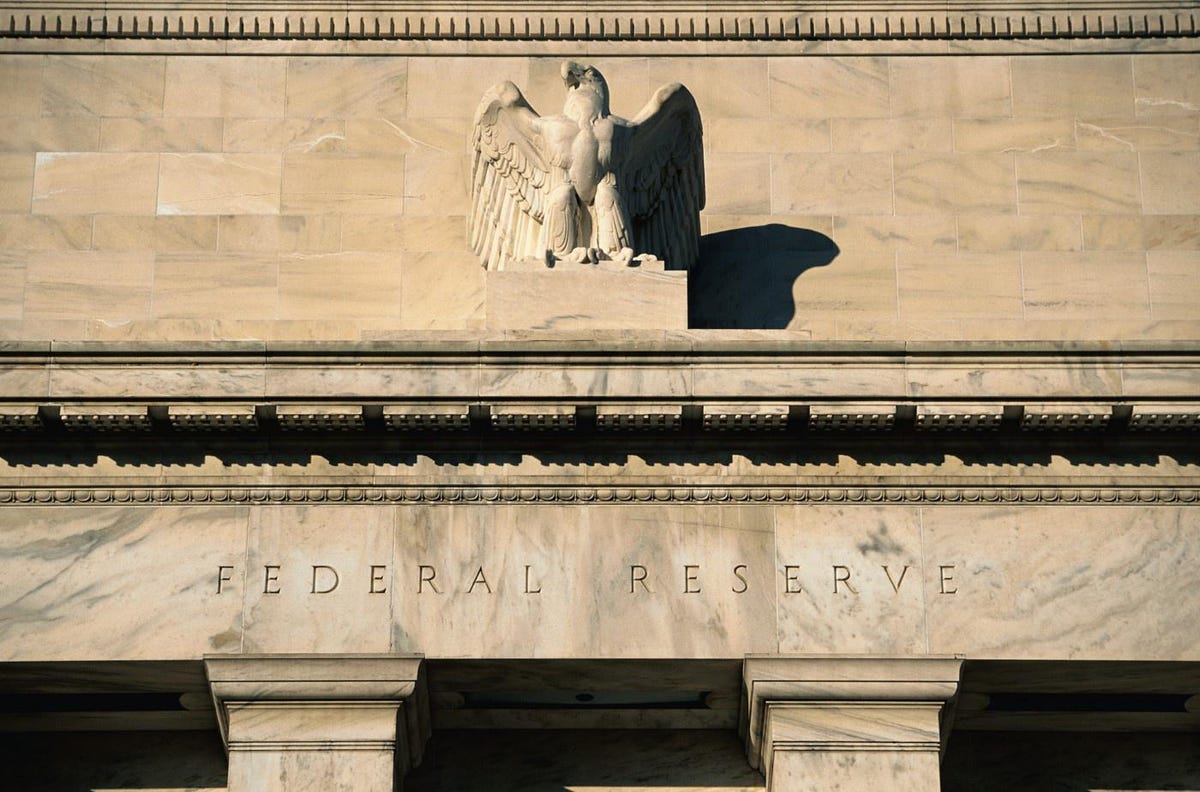
Getty Images
Key Takeaways:
- Fed Plans to Accelerate Tapering Plans as Economy Strengthens and Inflation Increases
- Bank of England, European Central Bank, and the Bank of Japan Unlikely to Follow Fed
- Financial Stocks Have Tepid Reaction to Fed’s Tapering Plan
As expected, the Federal Reserve expanded its tapering plans on Wednesday by decreasing the amount by $30 billion per month from a decrease of $15 Billion per month. What that means is that the Fed has been stimulating the economy and providing liquidity by purchasing $80 billion in Treasuries and mortgage-backed securities. The Fed was planning on reducing the buying program by $15 billion per month, because the economy is strong, and the stimulus appears to be causing inflation. Today, the Fed decided to speed up its tapering plans by reducing the bond-buying program by $30 billion per month. At this rate, the Fed could be done with its stimulus in March.
The Fed also kept the federal funds rate unchanged and said it planned to keep the rate low until it sees signs of full employment. The Bureau of Labor Statistics (BLS) “defines full employment as an economy in which the unemployment rate equals the nonaccelerating inflation rate of unemployment (NAIRU), no cyclical unemployment exists, and GDP is at its potential. The full-employment assumption links BLS projections to an economy running at full capacity and utilizing all of its resources.”
However, with the unemployment rate at 4.2%, employers are struggling to find people to fill positions, and payroll costs are rising at an average of 3.9%. These conditions led many analysts to conclude that the United States is already at full employment. Nonetheless, the Fed does project that full employment would occur in 2022 and projected that the federal funds rate would reach 0.9% by the end of 2022, which would likely result in about three rate hikes in 2022.
Finally, the Fed projected that inflation would pullback significantly by the end of 2022 as stimulus is ended, rates rise, and the negative effects for COVID-19 lockdowns are resolved. During the press conference, Fed Chair Jerome Powell was able to address his critics that thought the Fed was behind the inflation curve, in which he disagreed although admitted that inflation become a bigger issue than he had expected because of the effects of COVID-19.
MORE FOR YOU
The major stock indices were trading negative before the announcement and then rallied on the news. However, they sold off once again and then rallied a second time. S&P 500 (SPX) climbed 1.18%, the Dow Jones Industrial Average ($DJI) rose 0.78%, and the Nasdaq Composite (COMP:GIDS) increased 1.61%. The 2-year Treasury yield and 10-year Treasury yield (TNX) rallied on the news, sparking a rally in the regional banks industry group. The S&P Regional Banks Select Industry Index (SPSIRBK) rallied 0.90% on the news. However, tech stocks rallied as Powell said he was unconcerned by long-term rates, which could help stock valuations.
Central Banking Variants
Later this week, other major central banks will meet to discuss their respective policy approaches. On Thursday, the Bank or England (BoE) and the European Central Bank (ECB) will deliver their investment rate decisions. The Bank of Japan (BoJ) delivers its decision on Friday. The approaches will likely be different, particularly because of each country’s or region’s approach to the COVID-19 Omicron variant.
Europe’s economy continues to struggle because many European countries are still implementing tough pandemic lockdowns and restrictions that are keeping people from getting back to work. According to The Wall Street Journal, the policies are worsening supply-chain issues and exacerbating labor shortages. Under these circumstances, the ECB is expected to continue its bond-buying program despite record inflation in the eurozone, which reached 4.9% in November.
The United Kingdom is also seeing its highest inflation in almost a decade at 4.2%, and until recently, the BoE was expected to raise rates. However, Omicron is rapidly spreading throughout the United Kingdom, and government restrictions could mean that the BoE holds off on raising rates.
The BoJ is expected to remain accomodative in its interest rate policy because it’s seeing almost no inflation. Japan hasn’t had the same kind of demand for products and goods as other countries because the Japanese don’t see wage increases like U.S. workers do. In the United States, companies are expecting to see a 3.9% increase in wages over the next year. But in Japan its difficult to change jobs, so there are fewer pressures to increase wages to attract or keep talent. The difficulties in gaining wage increases is one reason demand and therefore prices remain low in Japan. The Japanese tend to be more cost conscience, and businesses that raise prices have a tendency to quickly lose customers.
CHART OF THE DAY: FINANCIAL UNCERTAINTY. The Financial Select Sector Index ($IXM—candlesticks) has … [+]
Financial Fitness
The Financial Select Sector Index ($IXM) was relatively flat, despite the rally in the 10-year Treasury yield. Most industry groups in the financials sector struggle to outperform the overall sector. However, banks and diversified financials industry groups are basically in line with the sector, while insurance and regional banks can create separation in certain periods.
Regional banking stocks tend to be particularly sensitive to changes in interest rates because banks tend to be smaller and less diversified. They also tend to focus more on consumers and small businesses. The rise in yields helped the group rally because an increase in the saving and lending spread increases.
Insurance companies tend to be a favorite among income investors and can gain popularity as investors get more defensive. If defensive sectors like utilities, real estate, and consumer staples continue to perform well, insurance companies could rise with them.
TD Ameritrade® commentary for educational purposes only. Member SIPC.




